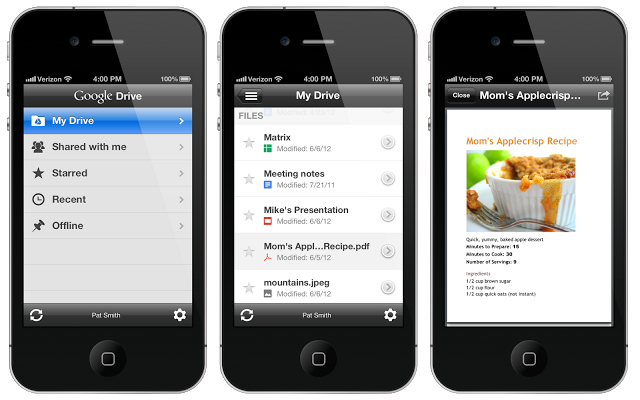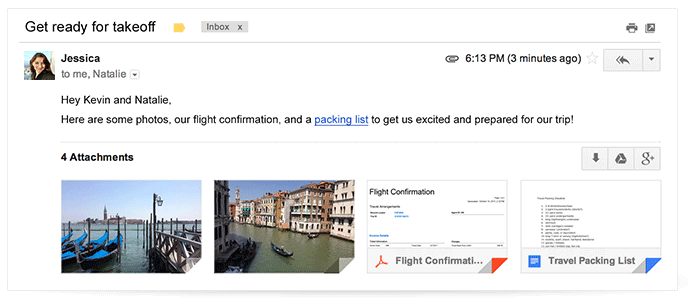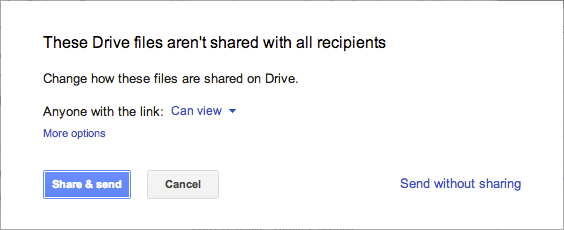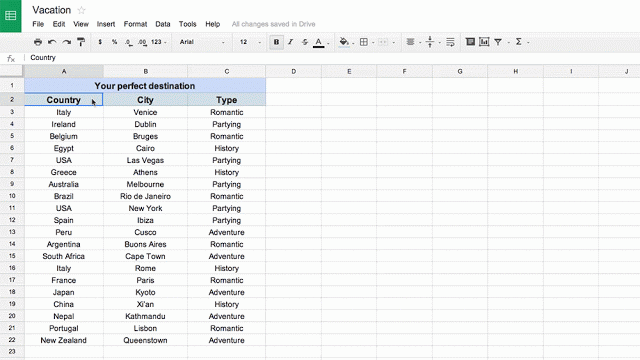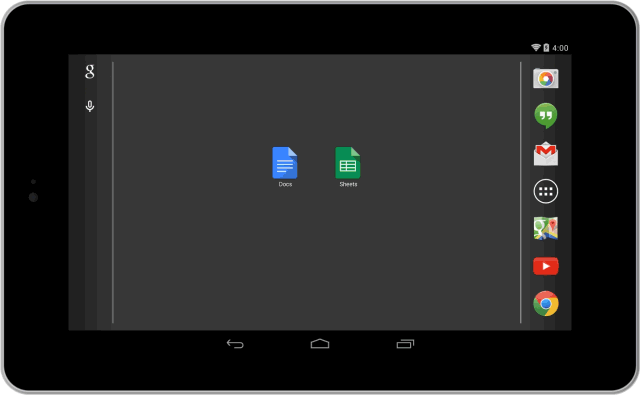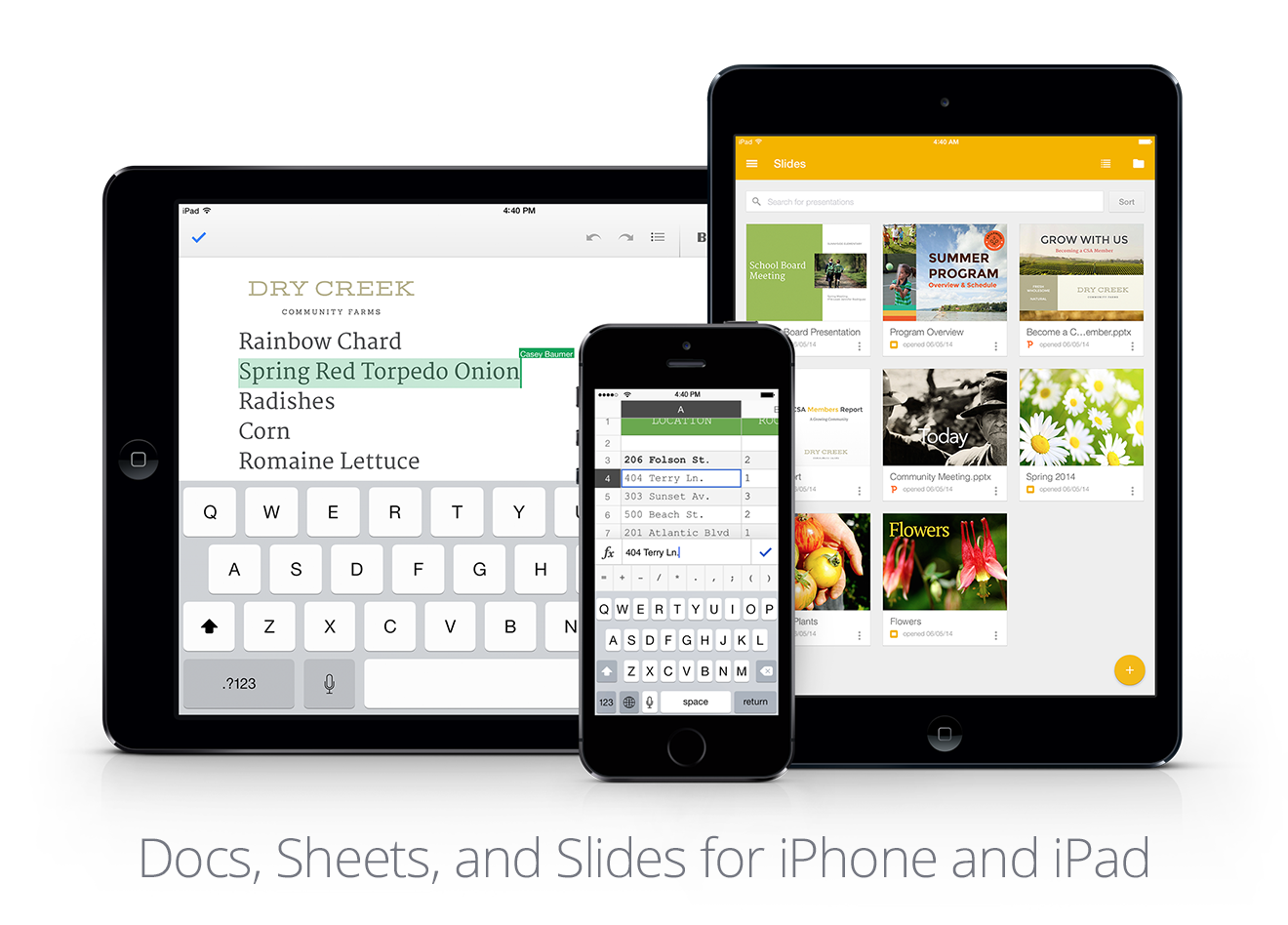Top 10 Google Drive Updates of All Time
August 27, 2014
6 minute read
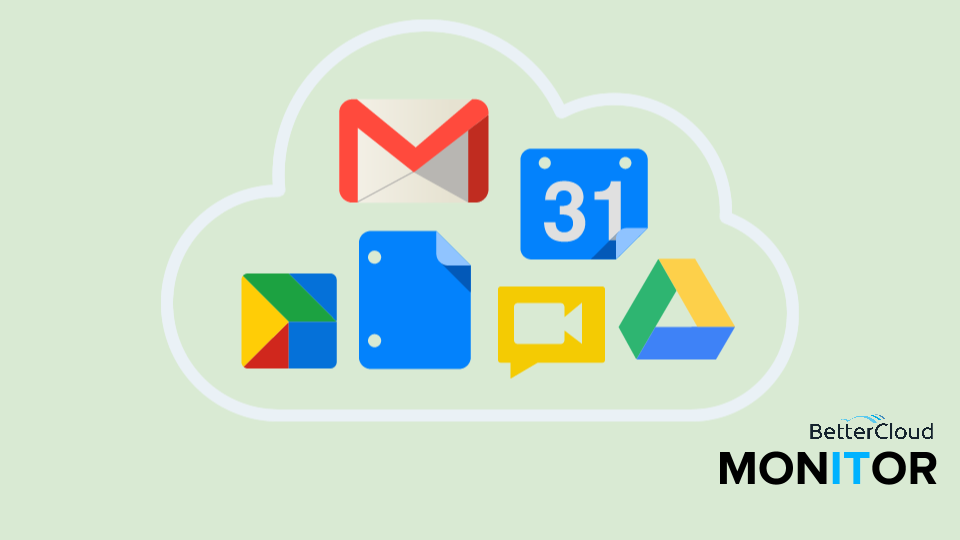
 On Tuesday, April 24, 2012 Google launched Google Drive, the long-awaited storage and collaboration platform. To compete with the likes of Dropbox and Box, Drive in its earliest iteration allowed Apps users to create, share, collaborate and store in the cloud at no additional cost.
On Tuesday, April 24, 2012 Google launched Google Drive, the long-awaited storage and collaboration platform. To compete with the likes of Dropbox and Box, Drive in its earliest iteration allowed Apps users to create, share, collaborate and store in the cloud at no additional cost.
At launch, Drive gave users the ability to:
- Create native Docs, Spreadsheets, Presentations and Drawings
- Easily share, comment and reply on native and uploaded files like PDFs, images and videos
- Access files locally with desktop sync or in the cloud on any device
- Access files from a native Android app
- Search files including the text of scanned documents using OCR technology
- Store up to 5GB of data for free or upgrade to 25GB for $2.49/month, 100GB for $4.99/month or 1TB for $49.99/month
While it’s only been a little over two years since Drive’s launch, Google has continually updated the product and its components – Docs, Sheets and Slides – to give business and consumer users alike an even better experience. We’ve picked Drive’s top ten updates to provide an overview of the application’s transformation from 2012 to today.
See something we missed? Let us know your favorite Drive update in the comments section below. Want even more on Drive? Check out these updates here.
1. Offline Editing and Drive for iOS: June 28, 2012
While Drive was well-received, upon launch there were a two big missing features: offline editing capabilities and mobile applications for iOS users. Thankfully, just a few months after launch Google responded.
Offline Editing
Offline editing capabilities gave users the ability to create, edit and leave comments on Docs without an internet connection via the Drive web interface. While these updates were certainly helpful, users would have to wait months for the same capabilities to come to Sheets and Slides.
Though Google only added offline editing to one area of Drive, the update was extremely significant. Since its inception, Google Apps had received criticisms for its lack of offline capabilities. Critics noted that with Apps, it was nearly impossible to get work done without an internet connection. This update silenced critics and pushed Google Apps to a new level of usability.
Drive Comes to iOS
At launch, Google Drive lacked an accompanying iOS app. But just a few short months later, Google responded with a rich mobile application giving users the ability to:
- Open PDFs, photos, videos, documents and anything else stored in Drive
- Search all files, add collaborators to documents and make files available offline to view without an internet connection
Another update to mobile Drive applications in September 2012 allowed iOS users to edit Drive documents like their Android counterparts while Android users received the ability to add comments, reply to existing comments and view tables and presentations (a feature already available for iOS).
In the months and years to come, there have been several major updates to Drive mobile apps, read on to learn more.
2. Attachments Made Easier: November 12, 2013
This next update gave more than 120 million active Drive users (today, there are more than 190 million active users) the ability to view and save email attachments directly to Drive without leaving their inbox.
Another update just a few weeks later gave users the ability to attach Drive files to an email in Gmail. This update allowed users to insert files up to 10GB – 400 times larger than a traditional attachment – and made sharing files with any mail recipients fast and easy.
3. New Google Sheets: December 11, 2013
One of the biggest updates ever made to Drive was the complete overhaul of Spreadsheets at the end of last year. The update was a long awaited one for diehard Excel fans and really put Spreadsheets on a path to feature parity with the Office standby. Updates included:
- Support for millions of cells, faster scrolling, loading and calculation times
- Filter views allowing users to name, save and share different views of data in one sheet
- New function help with error highlighting
- Text flow into empty adjacent cells eliminating the need for manual merge
- Improved conditional formatting allowing users to add rules to change colors and styles of cells
- Offline editing in Chrome
Just a month prior to the Sheets overhaul, Google made huge updates to Slides. You can read about those changes here.
4. Add-ons for Docs and Sheets: March 10, 2014
A few months after the Sheets update, Google released Add-ons for Docs and Sheets, helpful tools built by Google’s developer partners that enhance the native capabilities of Docs and Sheets. Like the Sheets update, Add-ons bring functionality found in legacy office productivity suites to the cloud. Launch partners included MailChimp, EasyBib and Avery Label Merge and more.
5. More Storage: March 13, 2014
Due to some infrastructure changes (and no doubt to stay ahead of competitors like Box and Dropbox), Google drastically lowered the price for Drive’s monthly storage plans. While beneficial to consumer users, this update would later become virtually obsolete for companies upgrading to Drive for Work.
6. Separate Docs and Slides Mobile Apps: April 30, 2014
As mentioned earlier, Google continuously rolls out updates to its mobile Drive apps to provide users with a better experience. But, this past March, in a move to compete with Microsoft’s new cloud and mobile outlook and Office apps for iOS, Google launched standalone Docs and Sheets apps. Accessed from within the Drive application or opened individually, these standalone apps save users from having to scroll through their Drive files and folders. And, most importantly, the new applications allow users to view, edit and create files offline.
7. Drive for Work: June 25, 2014
The biggest Drive update since the application’s launch, particularly for Google Apps customers, came this June at Google’s annual I/O developer conference. Drive for Work gives businesses on Apps more control, security and visibility into how files are shared within and outside of their organizations.
The offering, which costs an additional $10 per user per month, includes:
- Unlimited storage with a file size of up to 5TB
- Advanced audit reporting giving IT professionals the ability to see file activity like when a file has been moved, deleted or shared within or outside of the organization
- New security controls allowing IT admins to select which employees can and cannot install the Drive desktop client sync
- File encryption for all files uploaded to Drive not only from a device to Google, but in transit between Google data centers and at rest on Google servers
- Google Apps Vault, a solution for search and discovery for compliance is also included with Drive for Work
8. New Docs, Sheets and Slides : June 25, 2014
Also announced at I/O, Google rolled out slick new versions of Docs, Sheets and Slides, giving users long-awaited functionality, serving to not only increase the usability of Drive, but putting the suite on par with Microsoft Office. Updates include:
- A Slides mobile app for Android (keep reading for more on the Slides iOS app)
- The ability to edit Office files without conversion in both web and mobile Docs, Sheets and Slides (on Android)
- Suggested edits, similar to redlining, giving users the ability to suggest changes that can be accepted or rejected
9. Advanced Security for Drive for Work: July 23, 2014
On the heels of the Drive for Work launch, Google released the Drive Audit API enabling partners like BetterCloud to build advanced security and auditing tools for Drive.
Building off of the new API, our product FlashPanel will be able to notify IT admins in real time when:
- Someone a collaborator is added to a Drive doc
- A document is shared publicly
- A document is removed from a company-wide shared folder
- A document has been created, edited, renamed, moved or added to a folder, marked as trash, deleted or removed from trash
10. Native Slides App for iOS: August 25, 2014
Last, but certainly not least, just this week Google release the much awaited standalone Slides app for iOS finally giving iPhone and iPad users the ability to edit Slides offline and view and edit PowerPoint decks directly without conversion.
Final Thoughts
Judging from these ten updates, it’s clear that Google is building with one key competitor in mind: Microsoft Office. It’s no secret that Google and Microsoft are in stiff competition for the enterprise and it will be interesting to see how this competition pushes both companies to innovate further.




